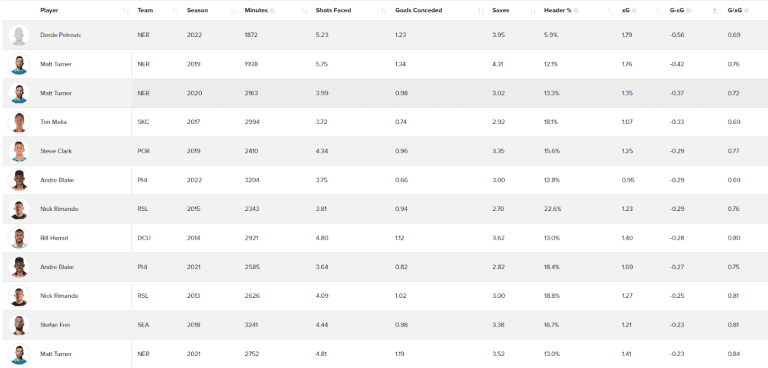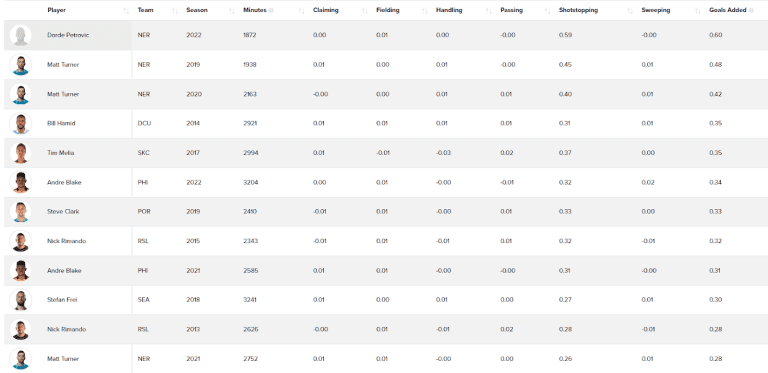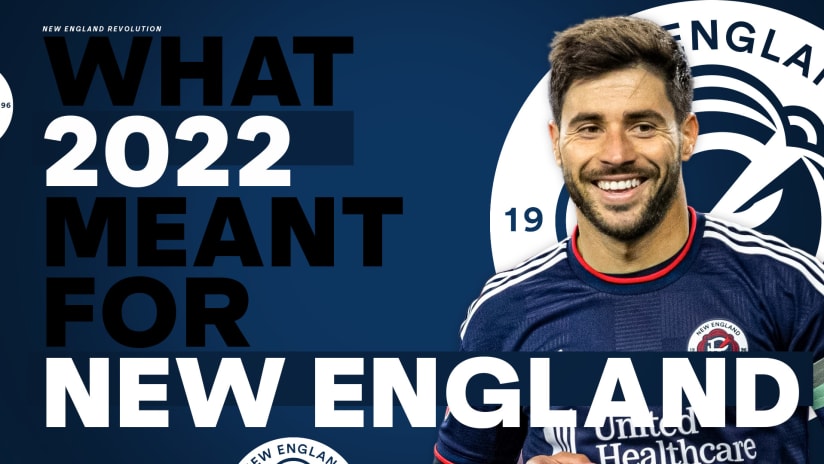The Revs won their first Supporters’ Shield and set a single-season points record in 2021. They came into 2022 with more silverware in their sights.
A GIF is worth a thousand words…
New England set that points record, and then brought in a record amount of cash for some record transfers out… and then nearly set a record for most points lost year-over-year while setting a single-season record for most points dropped from a winning position. They subsequently missed the Audi MLS Cup Playoffs, which is the first time that’s happened to Bruce Arena* in his MLS career.
(*) Full season only, get the 2008 Galaxy out of my face.
Look, this is the next horizon for MLS teams – developing and selling Champions League-caliber players, but still maintaining a competitive level – and not everybody’s going to be able to take that hurdle as smoothly as the Union did from 2020 to 2021. This year’s New England side, which sold Tajon Buchanan, Matt Turner and Adam Buksa for a reported combined $24 million, are going to be the touchstone example people (me, people are me) use when talking about this subject in the years to come.
Formation and Tactics
Arena’s approach to both tactics and formation has always been “if it ain’t broke, don’t fix it,” and most of the data he got from the 2021 season suggested the 4-4-2 wide diamond wasn’t actually broken.
But that data was faulty because it oversampled results, which were skewed by having individual match-winners like Turner, Buksa and Buchanan, while undersampling process-oriented stuff. Bruce actually touched on that in last year’s close-season interview when he said his side had actually played a little bit over their heads in terms of results (he was talking like an advanced analytics guy even though he’s very much not).
What should’ve been taken away from last year’s performance was how easily that wide diamond could end up with them playing 1-v-3 in central midfield against good teams. Arena eventually conceded on that point, going to a 4-2-3-1 in midseason in order to try to even out the numbers, but given injuries and the squad overhaul – and the fact the roster was built to play with two up top – it never really clicked.
The rest of the tactical discussion consists of: Carles Gil, lots of crosses and lots of scrambling in transition.
Highlights
After crashing out of the CCL – which we will definitely get to in the next section – the Revs responded by putting together a stretch in which they lost just once in 12 games and steadily started digging themselves out of the early-season hole they’d found themselves in.
That’s a true six-pointer on the road, the type of game Arena’s teams have always found a way to win and spin into the type of finishing kick that leads to strong playoff performances.
Instead, these Revs won just twice more until October.
Lowlight
That two-month death spiral to end the season belongs in here (particularly the scoreless home draw vs. Chicago to close August), as does the awful start to the season. You could also point to the spate of injuries, each one a devastating little blow to New England’s hopes all on its own.
But nothing compares to the failure against Pumas UNAM in the CCL quarterfinals. New England had won the first leg 3-0 at home, and I don’t care how early in the season it is, or how many regulars you’re missing: you can’t blow the return leg. You can’t go down to Mexico City and do this:
It’s one of the most spectacular losses in recent MLS history. But what made it so galling for New England fans is that it was so similar to how the Revs had been beaten by NYCFC in last year’s playoffs, or how (trigger warning!) the USMNT had lost at Couva five years ago when Arena was in charge. Which is to say the wide diamond left Arena’s side exposed and asked the d-mid (Matt Polster) to play 1-v-3 in central midfield.
So Pumas swarmed ‘em, pushed them back into the goalkeeper’s lap and generated chance after chance after chance out of the most valuable real estate in the game, before eventually advancing on penalties.
Revelation
Even with those suicidal tactics, New England probably advance past Pumas if they’d had Matt Turner fit and available. Turner’s four-year run is the best four-year stretch I’ve ever seen from a goalkeeper in this league.
And I swear to you they might’ve actually upgraded when they replaced him with Djordje Petrovic. By the eye test Petrovic has been INCREDIBLE, and by the advanced numbers, calling him merely “incredible” might be underselling it. The gang over at AmericanSoccerAnalysis.com has him saving the Revs more than half a goal per game by both xG and their super-nerdy “goals added” metric, which basically makes him the Serbian Jan Oblak.
Here are the best G-xG seasons in their database, which goes back a decade:

Here’s goals added:

Both of those are per 96, and with a minimum of 1,500 minutes played (Petrovic will crest 2,000 minutes unless he sits the final game of the year).
Literally no goalkeeper – not Turner, not Andre Blake, not Nick Rimando, not Stefan Frei, not any of the greats from back in the day like Tony Meola or Zach Thornton or Tim Howard – has ever been as good at stopping the ball from going into the net as Petrovic was for the Revs in 2022.
They need to have a succession plan handy, because they’ll be getting eight-figure offers for him soon. Maybe even as soon as this winter.
Disappointment
The whole season was disappointing, obviously, and a part of me wants to point to all the injuries in this section (Dylan Borrero, for example, looked like the perfect replacement for Tajon Buchanan before he picked up a knock and missed most of the final three months of the year).
I could also go with the offseason “Bruce’s guys” signings of Omar Gonzalez, Jozy Altidore and Sebastian Lletget, which, it turns out, was not an ideal way to strengthen the squad for a CCL push.
But instead I’m going to point the finger at the central defense as Andrew Farrell and Henry Kessler took a massive step backwards this year, both individually and as a partnership. Once those two guys were healthy the Revs should’ve been solid enough to grind out some 1-0s and push above the line, into the postseason.
They weren’t. It’s not entirely their fault, but when you’re sitting on 29 points dropped from leading positions, the starting CBs are gonna deservedly eat a whole bowlful of the blame.
2023 Preview
Five Players to Build Around
- Carles Gil (AM): Another Best XI-caliber season for the little genius.
- Brandon Bye (RB): Can still be a little bit wayward defensively, but he remains one of the elite attacking right backs in the league.
- Polster (DM): Wasn’t anywhere near as good this year as last, but still top-10 at the spot in MLS.
- Kessler (CB): Just have to hope that he, like Polster and so many others, will bounce back next year.
- Borrero (LW): Elite speed and I thought his decision-making in/around the box was promising.
Offseason Priority
I didn’t list Petrovic because he might get sold. I didn’t list LB DeJuan Jones because I suspect he might also get sold. If those two guys are still in Foxborough in 2023, then they are obviously two players to build around. If they’re not, then Arena’s got to figure out how to make two more Champions League-level replacements, which clearly becomes the offseason priority.
The other looming priority is to figure out what’s going to happen with Gustavo Bou and Giacomo Vrioni, the DP No. 9 they brought in for Buksa. Bou is not a traditional No. 9, but at this point in his career that’s probably the only spot he can really play (he definitely can’t play on the wing) unless Arena goes to a 3-5-2. Vrioni, meanwhile, is very clearly only a No. 9 – though, just as clearly, he struggled with basic No. 9 stuff like his movement in the box and creating off-ball danger.
Figuring out how to get these guys both onto the field and make the team functional on both sides of the ball isn’t going to be easy.













